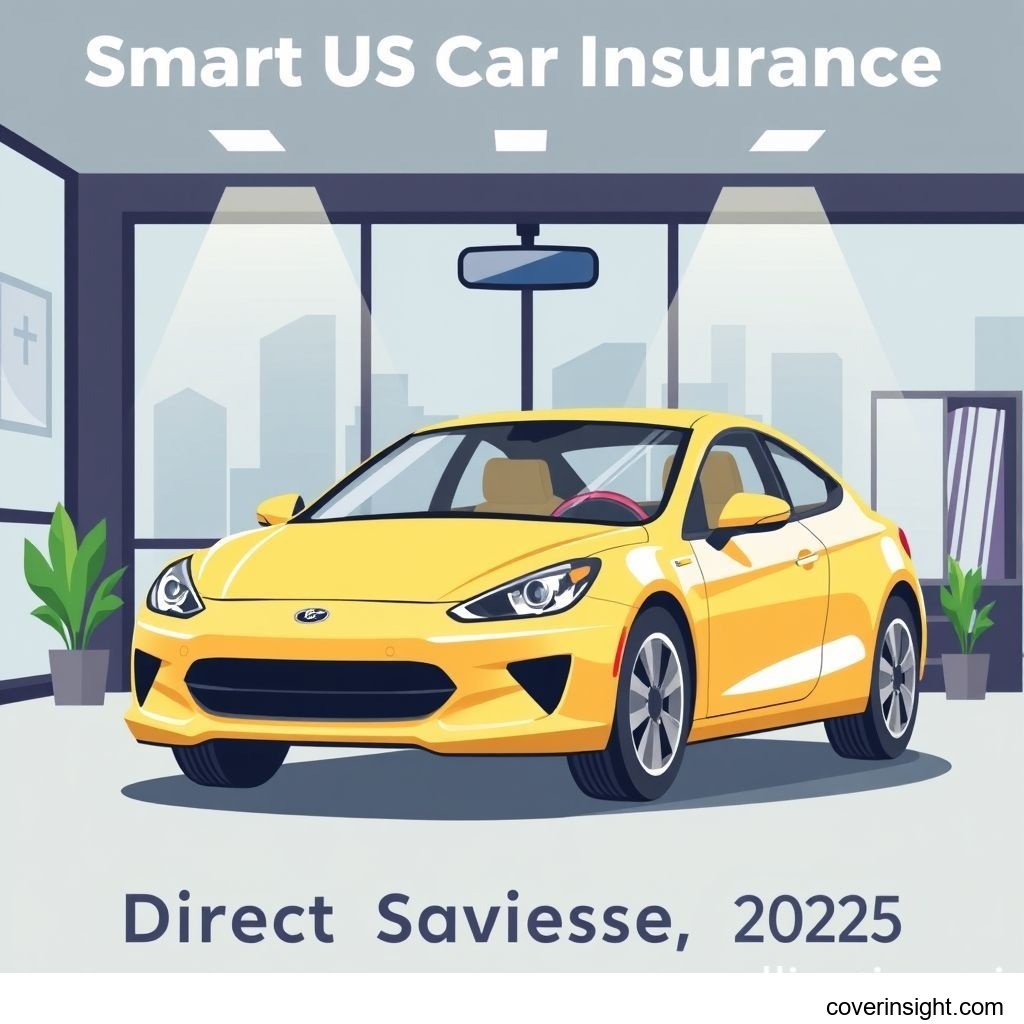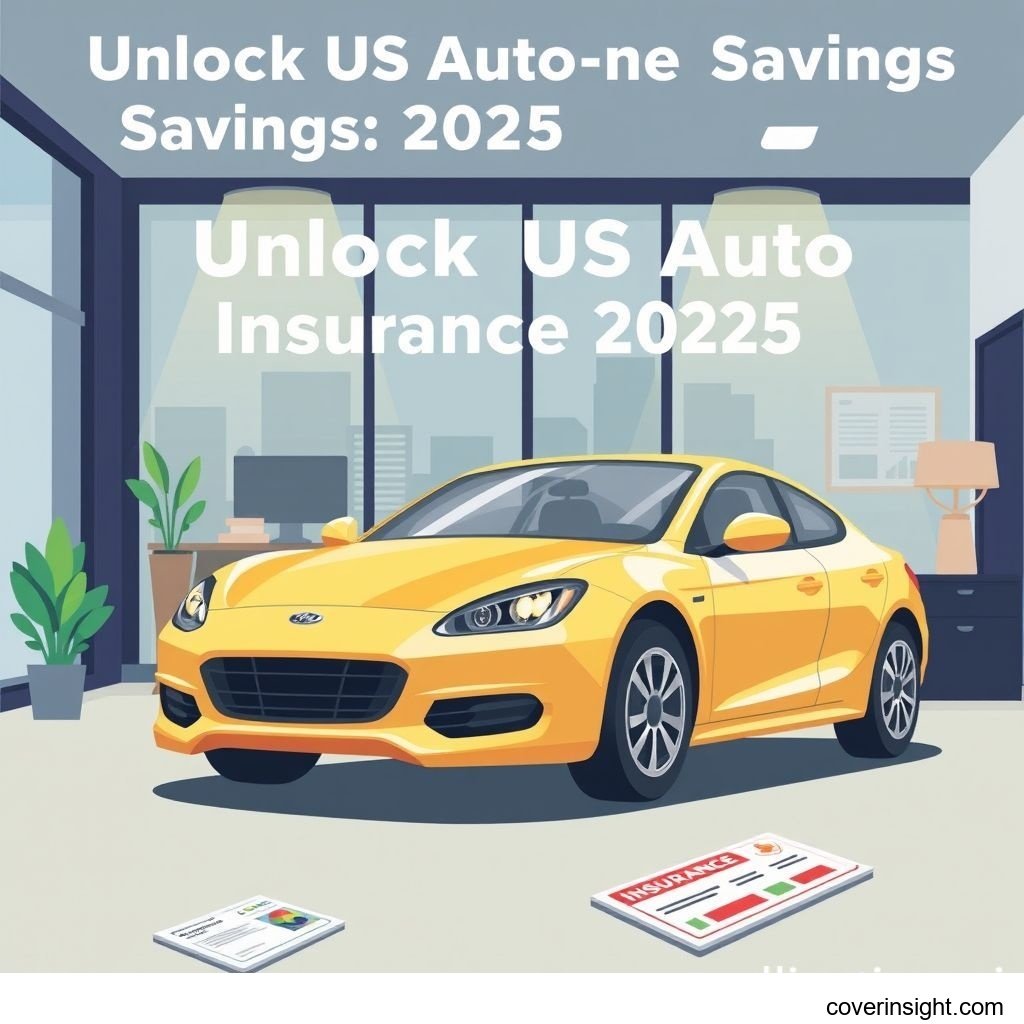Smart US Car Insurance: Direct Savings 2025 Guide
Introduction
In the dynamic landscape of 2025, navigating auto direct insurance in the US has become more crucial than ever for American drivers. With rising costs and an increasing emphasis on financial prudence, understanding how to secure smart car insurance with direct savings is no longer just an option – it's a necessity. This guide aims to demystify the process, helping you uncover the best value without compromising on essential coverage. As we look ahead, getting your ducks in a row with your insurance policy can truly make a difference to your wallet. For a broader understanding of how insurance works globally, you might find valuable insights by exploring general Insurance Resources Global.
Coverage Details
What’s Included
Direct car insurance policies typically offer a range of coverages designed to protect you financially in various scenarios.
-
Liability Coverage: This is the bedrock of most policies and is often legally required. It covers damages and injuries you might cause to other drivers and their property in an at-fault accident. It's usually split into bodily injury liability (per person/per accident) and property damage liability.
-
Collision Coverage: Pays for damage to your own vehicle resulting from a collision with another car or object, regardless of who is at fault. This is invaluable if you want to ensure your ride is taken care of after an unfortunate bump.
-
Comprehensive Coverage: Protects your car from non-collision incidents, such as theft, vandalism, fire, natural disasters (hail, floods), or even hitting an animal. It's like an all-encompassing safety net for your vehicle when it's not in a crash.
-
Uninsured/Underinsured Motorist (UM/UIM) Coverage: An absolute must-have in many states, this coverage steps in when you're hit by a driver who either doesn't have insurance or doesn't have enough to cover your damages and medical bills. Given that roughly 12.6% of US drivers were uninsured in 2022, according to the Insurance Research Council, this coverage can be a real lifesaver if you're ever in an accident with someone who doesn't play by the rules.
-
Medical Payments (MedPay) or Personal Injury Protection (PIP): These cover medical expenses for you and your passengers after an accident, regardless of fault. PIP can also cover lost wages and essential services.
Common Exclusions
While comprehensive, direct car insurance aims to cover a lot, there are common situations where your policy likely won't pay out:
-
Intentional Damage: If you intentionally cause damage to your vehicle or someone else's, don't expect your insurer to foot the bill.
-
Racing or Illegal Activities: Damage incurred while participating in races, stunts, or any illegal activity is almost always excluded.
-
Wear and Tear: Routine maintenance, tire blowouts from old tires, or general deterioration of the vehicle are not covered. That's just part of car ownership!
-
Unlisted Drivers: If someone not listed on your policy regularly drives your car and gets into an accident, your claim could be denied.
-
Business Use: If you use your personal vehicle primarily for commercial purposes (like ride-sharing or deliveries) without specific commercial insurance, your personal policy won't cover incidents related to that use.
Cost Analysis
Price Factors
The cost of auto direct insurance is no one-size-fits-all affair; numerous factors influence your premium.
-
Driving Record: A clean driving history with no accidents or violations is your golden ticket to lower rates. Conversely, a history of tickets or accidents can send your premiums through the roof.
-
Age and Experience: Younger, less experienced drivers typically pay more due to higher perceived risk. Rates often decrease as drivers gain more experience and reach their mid-20s.
-
Vehicle Type: The make, model, year, safety features, and even the color of your car can impact rates. Sportier, more expensive, or frequently stolen cars usually cost more to insure.
-
Location: Where you live and primarily park your car plays a significant role. Urban areas with higher traffic density, theft rates, or severe weather patterns often have higher premiums. For instance, drivers in Louisiana often face some of the highest average premiums in the nation, largely due to factors like high litigation rates and weather-related claims.
-
Credit Score: In many states, insurers use credit-based insurance scores as a predictor of future claims. A higher score often translates to lower premiums, as it's correlated with responsible behavior.
-
Deductible Amount: This is the amount you pay out-of-pocket before your insurance kicks in. A higher deductible typically means a lower premium, but be sure you can afford that upfront cost if an accident occurs.
Saving Tips
Looking to cut down on your car insurance expenses without sacrificing quality coverage? Here are some smart strategies for direct savings:
-
Shop Around and Compare Quotes: Don't just stick with your current provider. Get quotes from multiple direct insurers. Tools are readily available online that allow you to compare prices in a flash.
-
Increase Your Deductible: If you have a solid emergency fund, opting for a higher deductible can significantly lower your monthly premium. Just make sure it's an amount you can comfortably pay if the unexpected happens.
-
Bundle Your Policies: Many insurers offer discounts when you bundle multiple policies, such as auto and home insurance. It's often a win-win, simplifying your insurance needs and saving you money.
-
Maintain a Good Driving Record: This is probably the most impactful tip. Avoiding accidents and traffic violations keeps your rates low and can qualify you for good driver discounts.
-
Ask About Discounts: Don't be shy! Insurers offer a plethora of discounts: good student, multi-car, anti-theft devices, low mileage, defensive driving courses, and more. A quick call to your provider or a check on their website can reveal many opportunities.
-
Improve Your Credit Score: As mentioned, a better credit score can lead to lower premiums in many states. Paying bills on time and managing debt responsibly can improve your financial standing.
-
Consider Usage-Based Insurance: Some direct insurers offer programs that track your driving habits (e.g., mileage, braking, acceleration). If you're a safe driver, this can result in significant discounts.
-
When considering your options, remember to check with your state's specific insurance regulations. You can often find valuable resources and consumer guides on your respective State Insurance Departments website.
FAQs
How much does auto direct insurance cost?
The cost varies wildly depending on numerous factors like your location, driving record, car type, age, and chosen coverage limits. While a national average might be around $1,700-$2,000 per year for full coverage, some drivers pay significantly less and others much more. It's truly a "how long is a piece of string" question until you get personalized quotes.
What affects premiums?
As detailed above, factors like your driving history, age, type of vehicle, location, credit score (in most states), and the amount of coverage and deductibles you choose all play a major role in determining your premium. Even factors like marital status and claims history can influence the cost.
Is it mandatory?
Yes, in almost every US state, carrying at least minimum liability car insurance is mandatory. New Hampshire is the only state that does not require it, though drivers are still held financially responsible for damages they cause. It's not just a good idea; it's the law in most places to ensure financial responsibility on the road. For general consumer information on navigating government resources, including those that might touch on financial responsibility, you could even explore sites like Healthcare.gov (though specifically for health insurance, it demonstrates how government portals provide public information).
How to choose?
Choosing the right direct car insurance involves balancing cost with comprehensive protection. First, determine the minimum coverage legally required in your state. Then, assess your personal needs and financial situation. Do you need collision/comprehensive for an expensive car? Do you have an emergency fund for a higher deductible? Get multiple quotes, read reviews, and consider the insurer's customer service reputation. For comprehensive resources, especially on regulation and consumer protection, the National Association of Insurance Commissioners website is an excellent starting point.
Consequences of no coverage?
Driving without mandatory car insurance can lead to serious consequences, including fines, license suspension, vehicle impoundment, and even jail time in some states. More importantly, if you cause an accident without coverage, you could be personally liable for tens or even hundreds of thousands of dollars in damages and medical bills, which could easily bankrupt you. It's simply not worth the risk. For more on navigating personal finance in the US, especially concerning your vehicle, you might find valuable insights at US Insurance Home.
Author Insight & Experience
Based on my experience living and driving in the US for years, and having navigated my fair share of car insurance renewals, I've learned that complacency is the enemy of savings. Many drivers just stick with their current provider year after year, often leaving money on the table. The market for auto direct insurance in 2025 is more competitive than ever, with new players and innovative offerings constantly emerging. Taking an hour or two annually to shop around isn't just a recommendation; it’s practically a golden rule. I've personally seen my premiums drop by hundreds of dollars simply by comparing quotes, even when I thought I was already getting a good deal. It’s a bit like finding a hidden gem – the direct route often yields the best value if you put in a little legwork.
Further reading: Insurance Resources Global
Further reading: US Insurance Home








Comments